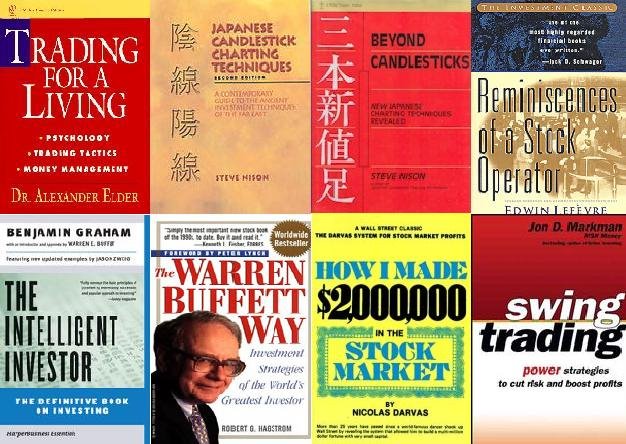The past three global recessions were all triggered by high oil prices due to oil supply disruptions: the OPEC oil embargo in 1973-74; the Iranian revolution in 1979; and
These have led me to believe that a commodities super cycle is underway. A super cycle is a prolonged (decade or more) trend rise in real commodity prices, driven by urbanization and industrialisation of a major economy (according to Citigroup’s Report:
According to the IMF World Economic Outlook, September 2006, China accounted for at least half of the increased demand for industrial metals - Zinc (113%), Lead (110%), Nickel (87%), Tin (86%), Steel (54%), Copper (51%), Aluminium (48%) - between 2002 and 2005. In 2004,
Jim Rogers, the best known advocate of HOT commodities, laid out that a secular bull market in commodities is underway, in as early as 2004, when his HOT Commodities was published in 2004. He observes that the 20th century has seen three secular bull markets in commodities (1906-1923, 1933-1955, and 1968-1982). Each of those secular bull markets has lasted a little more than 17 years. If his view holds, we are currently in the middle of yet another secular bull market in commodities that began in 1999.
So, will the boom continue as the world economy slows? US, being the largest importer of
| Table 1: Selected Commodities Price Increase | ||
| change since January 1999 (%) | | |
| | Nominal | Real |
| Nickel | 1,093 | 856 |
| Uranium | 954 | 745 |
| Crude oil | 436 | 329 |
| Copper | 338 | 251 |
| Lead | 281 | 206 |
| Rubber | 239 | 172 |
| Zinc | 239 | 171 |
| Tin | 162 | 110 |
| Gold | 125 | 89 |
| Aluminium | 121 | 77 |
| Corn | 75 | 41 |
| Hard logs | 66 | 33 |
| Wheat | 59 | 27 |
| Soybeans | 41 | 13 |
| Soyoil | 41 | 13 |
| Coffee beans | 26 | 2 |
| Cotton | 4 | -16 |
| Palm oil | -2 | -22 |
| Sugar | -6 | -25 |
Perhaps it’s good to draw some inference from the historical prices of commodities – gold, tin, lead, copper, cotton, hard logs, crude oil, uranium, zinc, aluminium, nickel, soybeans, soyoil, corn, wheat, palm oil, rubber, sugar and coffee beans – in real (adjusted for inflation) and current prices. From January 1999 to Mar 2007, nickel increased the most, by a stunning 1093%, uranium 954% and crude oil 436% in nominal terms (see table 1).
Although we have always thought that copper is very expensive, it has only risen by 338% over the same period and a 251% increase in real prices. Interestingly, the figures suggest why Jim Rogers are so bullish on agricultural commodities. After adjusting for inflation, they are ranked at the bottom of the table, showing the least increase or decline (cotton, palm oil and sugar) in the past few years. Palm oil looks really cheap, down 2% from 1999’s level at current prices and 22% in real terms. Figure 2 suggests palm oil should go up to USD1,600 to surpass its previous high recorded in May 1984. At current price of RM2,300 (USD673) per tonne, it is 55-60% off from the previous high or equivalent to 1.3 times of its current price.
Another important thing to note is that copper, nickel, zinc and uranium are at or close to their historic highs. One common characteristic among them is that they are in tight supply despite rising prices (but the world sees IPOs everyday). In the mining industry, it takes years of exploration before one can bring the metals out of the ground and most mining companies are not willing to spend hugely in an investment that might not result in any tangible output for at least a decade. The same goes for other commodities. For example, it takes 5 years for a coffee tree to mature. It is still very much a fundamental play in commodities markets. Some commodities are not cheap but some are. Commodities do not move in tandem. Each commodity has its own supply-demand equation, though some may be directly correlated with other commodities, e.g. a palm oil might be related to soybeans, soyoil, ethanol and crude oil. One needs to study the fundamentals driving the supply and demand of a commodity before investing in commodities.
This article is posted on behalf of Vola due to technicalities in posting, I think.





7 comments:
Napoleon once said, "When China awakes, the whole world shakes."
Did you know that all the manhole covers of Taiwan vanished overnight because of the China factor? Well, that speaks volume of the demand for steel in China.
Commodities are here to stay...so I'm placing my bet that's the price will maintain at least if not rise further at least for a few more years to come... China's insatiable desire to grow is inevitable.
I am wondering how would China be after the Olympics?
Olympics is not the main factor for the increasing demand for commodities, but the needs for better infrastructure, more factories, more high rise building, modernization of everything is happening now in China.
All these cause the commodities prise surge and is sustainable. esp hard commodities.
Ben,
Thanks for Napoleon's quote. China was a mighty kingdom existed long long time before the western civilisation but, sadly, there was little evidence documented as compared with the western ones. Anyone has any good history books on China to recommend? I have been looking for one.
Toebear,
It's not just China driving up the commodities, India is also playing a big part, gaining increasing influence in agricultural commodities. Have you heard of any fund managers in malaysia investing solely in commodities? Prices still have plenty of room to rise.
KC,
Well said. China's economy is still in her teens, there is definitely more to come.
Hope we can ride on this commodities boom. By investing in stocks might not be a good choice.
Thanks,
Vola
Max,
Thanks for helping me to do the posting. And also, everyone here should thank Max for pestering me to write in his blog. He is really a great guy that always likes to give.
There is nothing spectacular about my writing on HOT Commodities but I hope everyone can have some big picture about commodities now or at least know to spell "commodities". Funnily, Stephen Roach, the Chief Economist of Morgan Stanley, once was said to have spelled the word wrongly.
A little something I found over the net - one of many that are concerned about the Olympics effect.
"While the Olympic boom is providing a major face-lift for Beijing, it runs the risk of pushing up the country’s debt, increasing bad loans for the banks, and bumping the currently red-hot economy into a major slowdown. This was the legacy of the 2004 Athens Olympics for Greece. Yet, for China’s leadership, the 2008 Olympic games are highly important as they represent a major coming to age of the world’s fourth largest economy. In many regards this has echoes of Japan’s (1964) and South Korea’s (1988) earlier hosting of the games. Indeed, the 1964 Tokyo Olympics were the first to be held in Asia. For China, the 2008 Olympics are to showcase the advances made over the past several decades.
One of the potential Achilles heels for China is its banking system. For much of the Communist period, the country’s banks were used to prop up a wide range of companies. Credit issues were trumped by political considerations and the banking system reflected this process. However, as China shifted gears to a more market-oriented economy, the authorities turned their attention to cleaning up the banking system. This issue became even more pressing as China moved along the path to joining the World Trade Organization in the 1990s. According to Moody’s, the government has spent $432 billion since 1998 to clean up the banking sector.
Although considerable progress has been made in strengthening China’s banking system, the banks are not yet out of trouble. In the first quarter of 2005, China’s four largest banks reported a rise in problem real-estate loans of $8.7 billion (10% of their property loans). We can expect that those numbers are only going to increase due to the ongoing construction boom. The most exposed banks to real estate development are the country’s four largest - Industrial & Commercial Bank of China, Bank of China, China Construction Bank, and Agricultural Bank of China. These account for 76% of all leading.
Any crisis in the Chinese banking system will have ripples far beyond Chinese shores. Beyond the general effects that will be seen in numerous sectors and markets that have been dependent on ever-increasing growth from a rapidly developing China, a number of Chinese banks have sold equity shares on foreign stock exchanges. In addition, a number of international banks have bought around $19 billion in strategic stakes in the Bank of China, China Construction Bank, Industrial & Commercial Bank, and the country’s fifth largest bank, the Bank of Communications. Among the foreign lenders most exposed are Allianz, American Express, Bank of America, Goldman Sachs, HSBC Holdings, Merrill Lynch and Royal Bank of Scotland. A possible bank meltdown in China would certainly catch foreign institutional players and small investors in the aftershocks."
Post a Comment